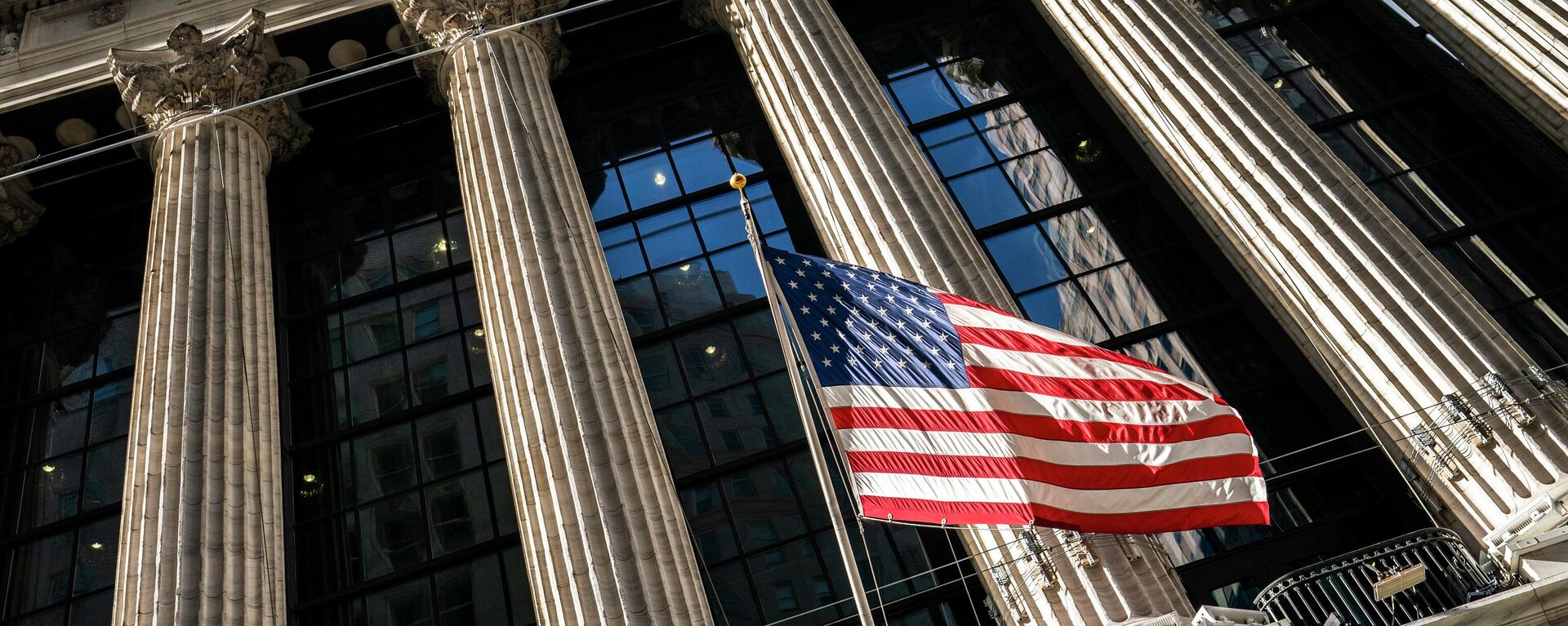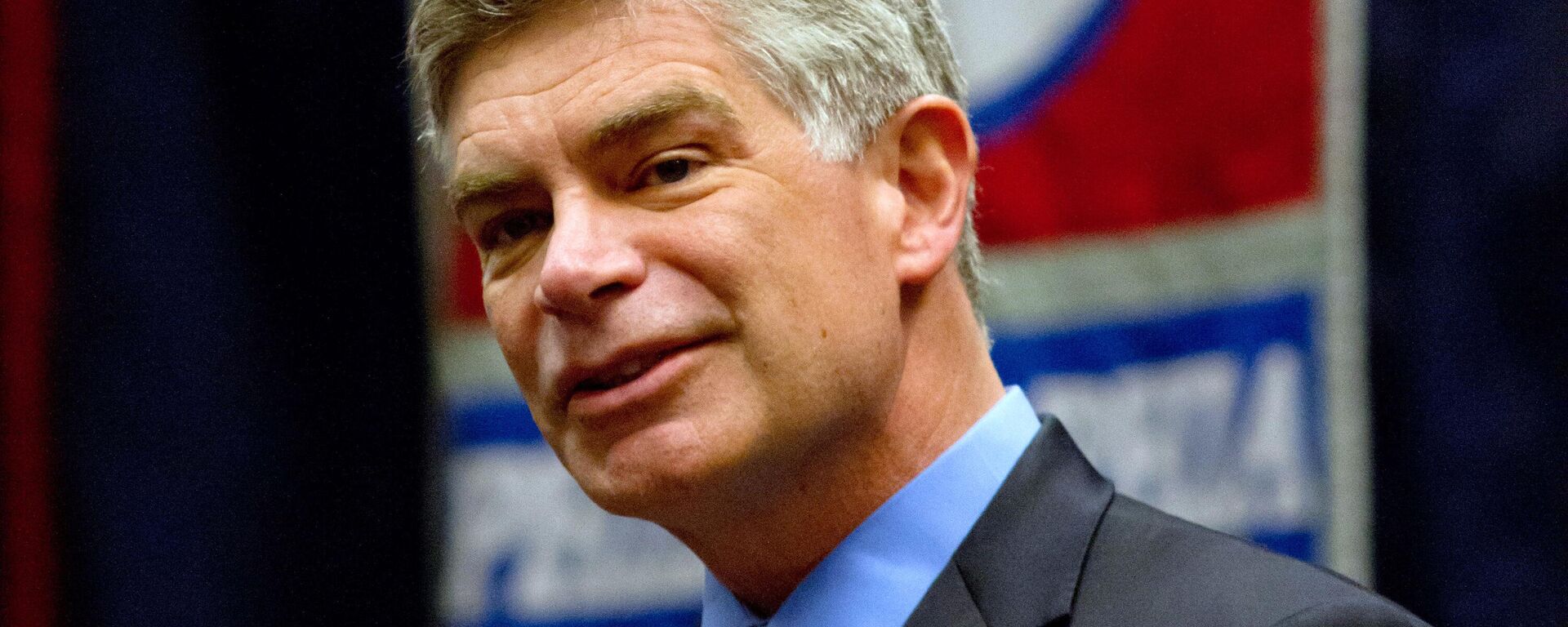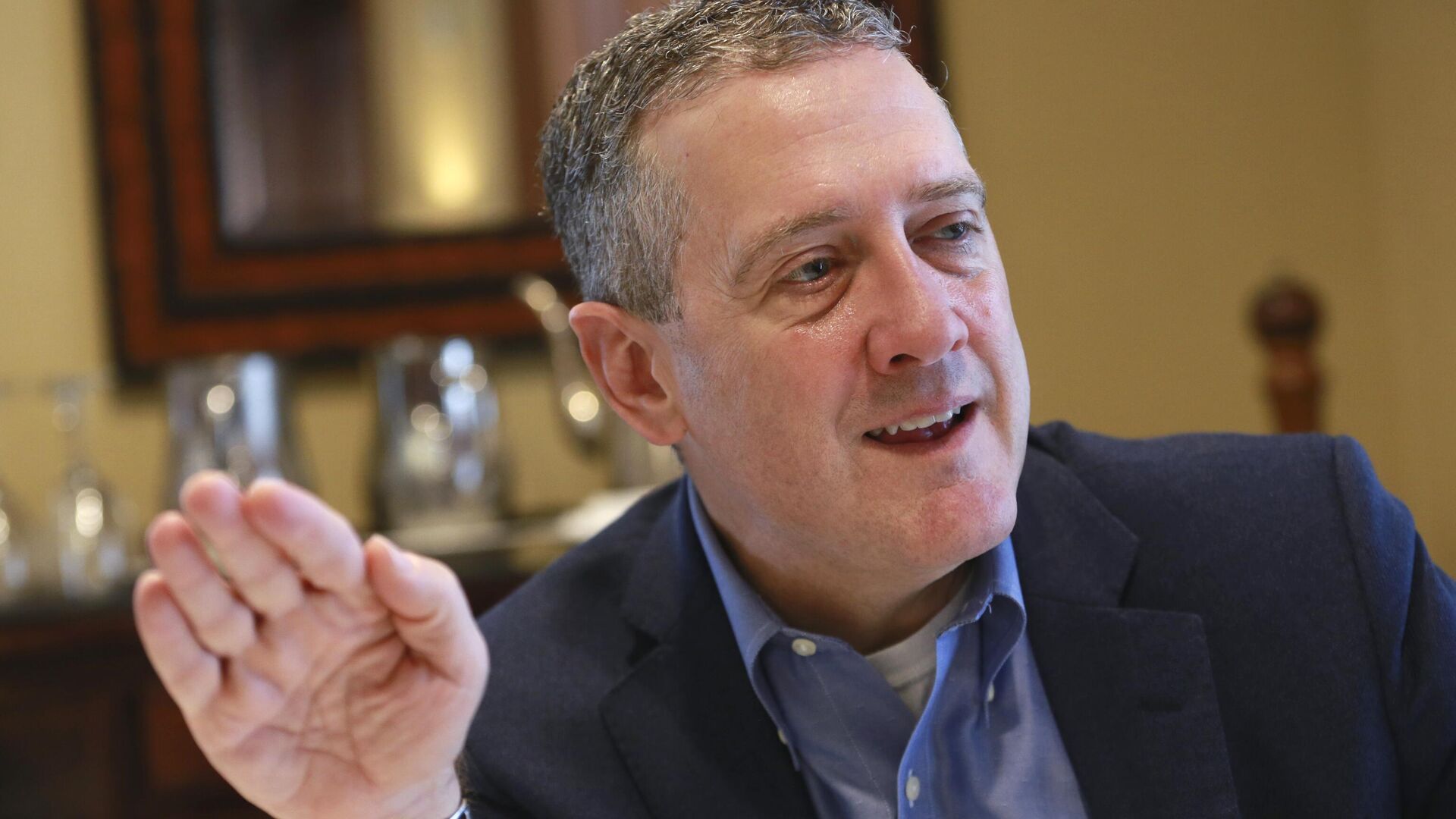https://sputnikglobe.com/20230217/feds-biggest-hawk-says-he-was-not-in-favor-of-rate-hike-pivot-1107525373.html
Fed’s Biggest Hawk Says He Was Not in Favor of Rate Hike Pivot
Fed’s Biggest Hawk Says He Was Not in Favor of Rate Hike Pivot
Sputnik International
St. Louis Federal Reserve President James Bullard, often viewed as the most hawkish official at the US central bank, said he was not in favor of lowering the quantum of rate hikes in America until inflation came under better control.
2023-02-17T02:22+0000
2023-02-17T02:22+0000
2023-02-17T02:22+0000
us
james bullard
federal reserve system
prices
rates
inflation
americas
https://cdn1.img.sputnikglobe.com/img/07e7/02/11/1107525203_0:160:3073:1888_1920x0_80_0_0_71417138d857f01afed776d71a65a9c4.jpg
Bullard’s view is at odds with market expectations that the Fed, which reduced the quantum of its rate hikes twice in the past two months, will continue with the so-called rate pivot instead of reverting to last year’s aggressive increases.The Fed has raised interest rates eight times since March last year, adding 450 basis points, in a bid to control runaway inflation. Prior to that, US rates peaked at just 25 basis points, as the central bank slashed them to nearly zero after the global COVID-19 outbreak in 2020.The Fed’s first post-COVID hike was a 25-basis point increase in March. It then moved up with a 50-basis point increase in May. After that it executed four back-to-back jumbo-sized hikes of 75 basis points from June through November. Since then, it has returned to a more modest 50-basis point increase in December and a 25-basis point hike in February.Bullard said he had not been in favor of slowing down rates at all when the Fed met earlier this month.Bullard’s comments came after the US Labor Department reported on Thursday that wholesale prices, one of the key determinants of inflation, rose their most in seven months in January, complicating the Fed’s job of keeping a lid on prices with minimal rate hikes.The reading on wholesale prices came two days after the broader gauge of consumer prices for January showed stickier-than-expected inflation.The back-to-back data on higher inflation prodded Cleveland Fed President Loretta Mester to say on Thursday that interest rates need to rise to above 5% and remain there an extended time in order to bring inflation down meaningfully.Bullard, when asked how high rates probably need to go, said he viewed a range between 5.25% and 5.5% as "appropriate". Rates currently stand at a peak of 4.75%.
https://sputnikglobe.com/20230105/us-rates-must-stay-high-to-achieve-inflation-target---fed-december-meeting-minutes-1106046726.html
https://sputnikglobe.com/20230214/fed-officials-say-us-consumer-report-shows-inflation-might-take-years-to-return-to-2-1107440506.html
americas
Sputnik International
feedback@sputniknews.com
+74956456601
MIA „Rossiya Segodnya“
2023
Sputnik International
feedback@sputniknews.com
+74956456601
MIA „Rossiya Segodnya“
News
en_EN
Sputnik International
feedback@sputniknews.com
+74956456601
MIA „Rossiya Segodnya“
Sputnik International
feedback@sputniknews.com
+74956456601
MIA „Rossiya Segodnya“
us, james bullard, us federal reserve, us fed rates hike, loretta mester, us inflation
us, james bullard, us federal reserve, us fed rates hike, loretta mester, us inflation
Fed’s Biggest Hawk Says He Was Not in Favor of Rate Hike Pivot
WASHINGTON (Sputnik) - St. Louis Federal Reserve President James Bullard, often viewed as the most hawkish official at the US central bank, said he was not in favor of lowering the quantum of rate hikes in America until inflation came under better control.
"I wouldn't rule out supporting a 50-basis point March hike," Bullard said Thursday, referring to the ideal rate the Fed should agree on at its next policy meeting on March 22.
Bullard’s view is at odds with market expectations that the Fed, which reduced the quantum of its rate hikes twice in the past two months, will continue with the so-called rate pivot instead of reverting to last year’s aggressive increases.
The Fed has raised interest rates eight times since March last year, adding 450 basis points, in a bid to control runaway inflation. Prior to that, US rates peaked at just 25 basis points, as the central bank slashed them to nearly zero after the global COVID-19 outbreak in 2020.

5 January 2023, 00:23 GMT
The Fed’s first post-COVID hike was
a 25-basis point increase in March. It then moved up with a 50-basis point increase in May. After that it executed four back-to-back jumbo-sized hikes of 75 basis points from June through November. Since then, it has returned to a more modest 50-basis point increase in December and a 25-basis point hike in February.
Bullard said he had not been in favor of slowing down rates at all when the Fed met earlier this month.
"I advocated for a half-point increase to get to an adequately restrictive level faster," he said.
Bullard’s comments came after the US Labor Department reported on Thursday that wholesale prices, one of the key determinants of inflation, rose their most in seven months in January, complicating the Fed’s job of keeping a lid on prices with minimal rate hikes.
The reading on wholesale prices came two days after the broader gauge of consumer prices for January showed stickier-than-expected inflation.

14 February 2023, 22:55 GMT
The back-to-back data on higher inflation prodded Cleveland Fed President Loretta Mester to say on Thursday that interest rates need to rise to above 5% and remain there an extended time in order to bring inflation down meaningfully.
Bullard, when asked how high rates probably need to go, said he viewed a range between 5.25% and 5.5% as "appropriate". Rates currently stand at a peak of 4.75%.




